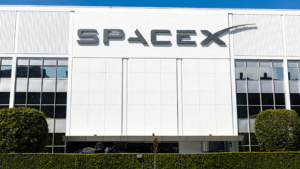
France Loses Luster with Investors as Political Turmoil Rises
Investor confidence in France is deteriorating as political gridlock and budgetary uncertainty deepen.

In a study published in the Journal of Materials Chemistry A, researchers led by Professor Hongxia Wang in collaboration with Assoc. Prof. Prashant Sonar of the Center for Materials Science at QUT showed that carbon nanodots could be used to improve the efficiency of perovskite solar cells.
The Perovskites solar cells, a relatively new photovoltaic technology, are considered the best candidate for PV to supply cheap, highly efficient solar electricity in the coming years. They have proven to be just as effective in power conversion efficiency as current commercial monocrystalline silicon solar cells. Still, an obstacle for researchers in this field is to make the technology cheaper and more stable.
Unlike silicon cells, they are created from a blend that is easy to manufacture. Because they are flexible, they can be used in scenarios such as backpacks that charge your devices on the go, solar-powered clothing, and even tents that can serve as stand-alone sources.
Last year, Associate Professor Prashant Sonar led the research team, including Amandip Singh Panu, a researcher at the Center for Materials Science, that turned hair scraps into carbon nanodots by breaking hairs and burning them at 240 degrees Celsius. In this study, researchers showed that carbon dots could be turned into flexible displays that can be used in future smart devices.
After adding solutions for carbon dots in the perovskite production process, the team of Professor Wang discovered carbon dots forming a wave-like perovskite layer where the carbon dots surround the perovskite crystals.
Professor Wang has been studying advanced solar cells for about 20 years and has been working with Perovskites since they were invented a decade ago. The main goal is to develop cost-effective, stable photovoltaic materials and devices to help solve the world’s energy issue. “Our final target is to make solar electricity cheaper, easier to access, longer-lasting, and to make PV devices lightweight because current solar cells are very heavy,” Professor Wang stated.
The International Space Station is powered by four solar fields that can generate up to 120 kW of electricity. But one of the disadvantages of current photovoltaic technology is the weight of the payload that will get them there.

Investor confidence in France is deteriorating as political gridlock and budgetary uncertainty deepen.

June 09, 2025: Canada will host the 50th G7 Summit from June 15 to 17 in Kananaskis, Alberta, amid heightened global tensions and economic rifts.

May 30, 2025: Canada’s economy expanded at an annualized rate of 2.2% in the first quarter of 2025, outperforming the market forecast of 1.7%.

May 28, 2025: SpaceX’s latest Starship test flight, conducted on May 27, 2025, ended in failure when the spacecraft’s upper stage broke apart during its descent over the Indian Ocean.

May 27, 2025: Greek Coastguards Charged Over 2023 Pylos Migrant Shipwreck That Killed Hundreds

May 27, 2025: Volvo to Cut 3,000 Jobs in Europe as Part of $1.9B Restructuring Amid EV Slowdown and Tariff Pressures.

Investor confidence in France is deteriorating as political gridlock and budgetary uncertainty deepen.

The Fort McMurray First Nation Group of Companies is the wholly owned business entity of Fort McMurray 468 First Nation. It was established in 1987 as Christina River Enterprises, and the organization rebranded as FMFN Group in 2021. Providing Construction, Custodial, Petro-Canada Fuel & Convenience Store, and Transportation services to a broad portfolio of customers, the Group of Companies is creating financial stability and prosperity for the Nation.

Maushum Basu is a visionary leader who inspires his team with a clear, compelling purpose. Unafraid to take calculated risks, he understands that growth often stems from change and innovation. His deep commitment to both Airia Brands, Inc.

When speaking with Martin Paquette, one thing is immediately apparent: he’s honest. His transparency is refreshing. While many shy away from such vulnerability, Paquette sees it as a force to reckon with. The incredible emotional intelligence speaks to years of looking within—it’s also what allows him to acknowledge his mistakes gracefully and use them as opportunities to innovate.

Leave us a message
Subscribe
Fill the form our team will contact you
Advertise with us
Fill the form our team will contact you